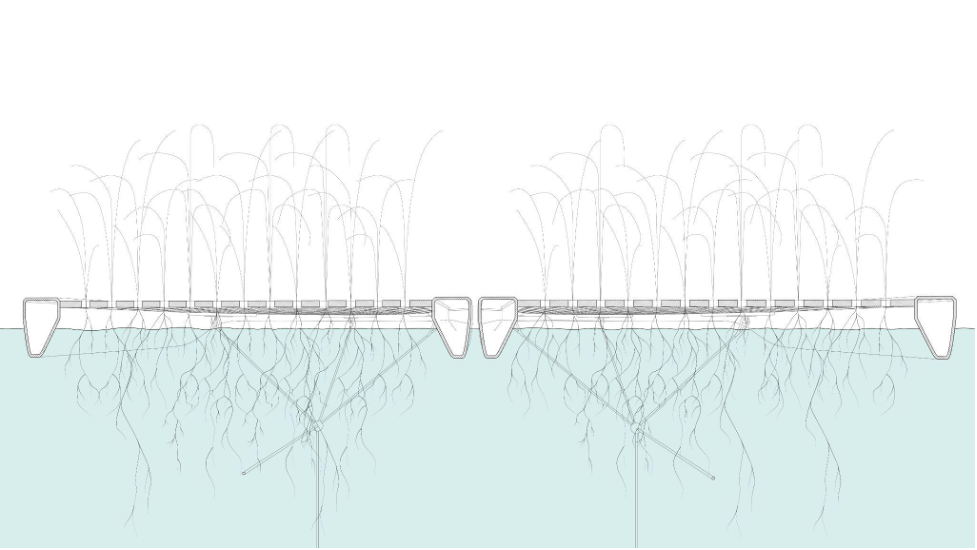Microplastics symbolize a looming situation inside up to date water therapy efforts. There’s a extensively held assumption that right here within the USA, water therapy is as efficient as it might presumably be. It isn’t.
Sure, water therapy programs are extraordinarily subtle, and so they can successfully take away many impurities, however that effectiveness merely doesn’t apply to microplastics.
Derived from plastic merchandise of every kind, microplastics are plastic particulates that inevitably enter our water programs unintentionally. And remember the fact that animals additionally eat these microplastics, which may be very distressing when you think about that this impacts each our pets in addition to the livestock we depend on for our day-to-day meals.
In line with immediately’s visitor, who you’ll be assembly shortly, the common particular person is now consuming roughly a bank card’s value of plastic each week by way of our water and the meals we eat.
Though there are nonetheless no definitive revealed research on the short- and long-term results of consuming these microplastics, it appears very seemingly that consuming any quantity of plastic is unhealthy.
Governments and personal corporations at the moment are adamant of their efforts to take away these particulates from our water provides, and a gaggle known as PolyGone Techniques is likely one of the most enjoyable at present working on this space.
Based by Yidian Liu and Nathaniel Banks, PolyGone has designed a filter that’s particularly meant to take away microplastics from water, and so they’ve been working with buyers and authorities our bodies within the USA, Canada, and Europe to run pilot assessments that may permit them to collect priceless information and additional enhance their design.
We had the pleasure of talking with Yidian lately, and she or he shared some enjoyable and fascinating tales in regards to the transient however thrilling historical past of PolyGone, together with the early days of the corporate when it was simply her and Nathaniel engaged on a thesis undertaking.
From that second on, their firm has earned its place within the battle in opposition to dangerous microplastics.
The roots of a profitable partnership
Yidian and Nathaniel first met throughout their undergraduate research at Syracuse College. They had been each learning structure, and so they had been each worldwide college students as effectively, adapting to life within the USA. Though they didn’t share any of their programs, they usually labored all-nighters in campus pc labs to complete initiatives and hone their expertise. With time, they settled right into a wholesome working relationship, although Yidian admits that took a while.
“I truly didn’t like Nathaniel a lot at first as he was at all times speaking and procrastinating, whereas I simply wished to get my work completed in silence. However over time, we began to get to know one another higher, and I got here to understand his distinctive design expertise. That is what finally led to us collaborating on our tutorial analysis, extracurricular initiatives, and even enterprise ventures within the years to return.”

Yidian & Nathaniel’s Design Thesis at Princeton Structure
Following their undergraduate research, they each bought accepted to Princeton College’s Grasp’s program in Structure, the place their joint thesis analysis centered on designing novel waste infrastructure.
Coming from design
When Yidian and Nathaniel determined to set about making a filter to eradicate microplastics from water programs, their shared background in design was a bonus in some ways. That they had the talents to create mockup designs for prototypes and lead the undertaking with a definitive, well-defined aim.
“On a technical aspect, we now have expertise in ideating, 3D modeling, fabricating, and iterating elegant product prototypes quickly with minimal outsourcing.”
However because the undertaking developed right into a well timed and viable enterprise alternative, the pair confronted substantial challenges. Additional, the filter design course of additionally wanted to incorporate intensive testing and scientific evaluation.
“As designers, we weren’t skilled in any facet of enterprise administration, fundraising, or enterprise pitching. We additionally aren’t skilled scientists that may conduct in-depth water therapy tech experimentation and analysis. This made points of creating our water therapy product, and creating a compelling enterprise mannequin for it, very difficult.”
The answer for PolyGone was to search out personnel who would have the ability to contribute key expertise in these areas.
“We networked with analysis consultants and introduced them into our staff to complement our lacking ability units and took many extra-departmental programs to coach ourselves on the fundamentals of enterprise improvement and administration whereas at Princeton.”
Nonetheless, in surprising methods, their design and structure background has come again into play in the midst of all this networking
“We’re nice at interfacing with pilot companions and coordinating disparate teams to carry our conceptual pilots into actuality. Lastly, as designers, we take pleasure in pushing something we develop to be not solely purposeful, but additionally ergonomic, elegant, and visually interesting, which I feel is a refreshing departure from what is often anticipated of water therapy expertise.”
This distinctive strategy not solely permits Yidian and Nathaniel to remain true to their ability units but additionally helps PolyGone and its initiatives stand out to buyers and water therapy companions.
Whereas we’re on the subject of design, that is the proper time to speak in regards to the design technique of PolyGone’s microplastic filter, the corporate’s flagship undertaking.
A filter that mimics nature
As you’ll be able to inform from the identify, microplastics are extremely tiny, making the design of a microplastic filter extraordinarily difficult.
Even when a specific design does the job of trapping microplastics with a really positive mesh, for instance, deploying that design in a pure waterway may result in interference with the native ecosystem, trapping different sediments which are important to the quick atmosphere.
PolyGone has spent greater than two years creating, prototyping, and refining its filter design, and the only largest supply of inspiration was the pure world. At first, the staff truly used actual aquatic plant roots within the filter, however this strategy introduced its personal issues.
“The concept behind our authentic filter was quite simple. Aquatic plant roots are very fibrous and sticky and are extremely efficient at trapping and absorbing small sediments from water. Why not use them to entrap microplastics? This grew to become the underlying foundation of our analysis whereas at Princeton. Assessments validated that it labored fairly effectively in a lab setting, however there have been main issues with the thought to be used in wastewater streams or lakes.”

Preliminary Design with Pure Plant Roots
Utilizing pure roots was a step in the fitting route, however Yidian and Nathaniel determined that it might be way more helpful to make use of pure roots as the premise for a man-made design. The results of this line of pondering was what PolyGone is now calling the synthetic root.
“For the reason that preliminary pivot, we now have redesigned our ‘synthetic root’ filter a number of instances to enhance its aquatic efficiency. Whereas we at the moment are very proud of our filter’s lab and small-scale subject efficiency, we’re nonetheless working exhausting to optimize it additional.”
Microplastic filtering remains to be such a brand new subject that there’ll seemingly be room for enchancment for a few years to return as our understanding of microplastics improves and extra water therapy programs begin integrating microplastic filtering.
However up to now, over the course of only a few years, PolyGone has managed to create a extremely progressive filter design for an important aim in up to date water therapy, and that innovation has caught the attention of many buyers in addition to different corporations and entrepreneurs working within the clear tech house.
Reaching out
PolyGone Techniques has grown at an unimaginable charge, and that’s thanks not solely to some very exhausting work on the a part of the staff but additionally intensive networking.
Whereas the preliminary filter prototype was the tip results of Yidian and Nathaniel’s analysis whereas at Princeton, PolyGone has discovered extra funding within the years since by talking with buyers and with others throughout the clear tech sector.
Yidian and Nathaniel additionally attend quite a few conferences and occasions the place they will share their mission and doubtlessly type enterprise relationships.
Yidian says that, whereas she and Nathaniel are sometimes fairly introverted, these sorts of occasions have significantly expanded their very own expertise as enterprise leaders in addition to their alternatives.

Yidian profitable an award from the Empower 2023 Pitch Competitors
“Attending pitch competitions, assembly buyers and others within the clean-tech house, and doing spherical desk panels with business consultants has been vastly transformative for us. Our first funding allowed us to take our unbiased analysis full-time and make it our profession. All of the talks with coverage consultants, scientists, authorities officers, suppliers, and buyers are offering our staff with new avenues to develop our tech and companions for pilots.”
The staff as an entire has been in a position to increase their confidence and push even more durable to make their ambitions a actuality.
Each funding is a significant vote of confidence. Each group that agrees to take part in a pilot check is bolstering PolyGone’s journey towards eliminating microplastics from water programs.
Wanting again on the corporate’s success, Yidian is blown away by simply how far they’ve been in a position to are available such a brief period of time.
“I’m actually shocked! Simply over a 12 months in the past, I used to be working in a small structure workplace, designing ADA loos by day, and doing microplastic experiments in my condominium by evening. Now we now have our personal lab, workplace, analysis staff, a validated MVP microplastic filter, and several other water therapy pilots absolutely funded and being manufactured. It’s been an extremely tense and scary journey, however I wouldn’t commerce it for something on the planet.”
Particularly, she was reminded of the very beginnings of this concept when she and Nathaniel had been nonetheless at Princeton.
When the 2 introduced their analysis on microplastics and an preliminary filter design to a school panel, the response was lower than encouraging.
“They went on for round quarter-hour, deriding us for even presenting the idea, saying we had been wholly unqualified to even suggest an answer for microplastic air pollution. Notably, one particular person talked about that, as designers, our job wasn’t to resolve such advanced environmental issues that function past the human scale and that we must always as a substitute concentrate on broadening consciousness of the issue and depart it to engineers and scientists.”
For Yidian and Nathaniel, this try to discourage the 2 of them from pursuing this aim truly grew to become a supply of motivation.
“We spent the subsequent few months networking with scientists and engineers throughout Princeton to assist us check and validate our tough idea. Upon our last thesis assessment, we introduced roughly the identical thought, however with a bunch of Ph.D. credit and citations. The jury liked it and stated the thought was now ‘impressed’.”
Nowadays, Yidian sees that early criticism as a bonus. It was a sign to begin networking, to ask different views to make their concepts higher.
This has grow to be a guiding star for PolyGone Techniques. The aim of eliminating microplastics is greater than any particular person drawback, extra essential than any non permanent hurdles. The corporate is equipping itself to successfully and effectively clear up this urgent situation.
PolyGone could have had a simple starting, but it surely has now grow to be a powerhouse within the battle in opposition to microplastics in our water programs. What began as a two-person partnership has grow to be a collective effort to attain a happier and more healthy planet.
Laila Azzahra is an expert author and blogger that loves to jot down about expertise, enterprise, leisure, science, and well being.


